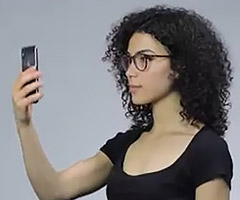Rare to find arizona western coral bean caudex succulent bonsai plant παχύφυτο


















- Condition: New
Rare To Find Erythrina flabelliformis, Western Coral Bean caudex succulent bonsai plant παχύφυτο
ΠΑΧΥΦΥΤΟ με περιοχή προέλευσης την Νότιες ΗΠΑ (ανθεκτικό εξ'αυτού σε ξηρασία και ψηλές θερμοκρασίες που παρουσιάζει τα τελευτία χρόνια η Κύπρος).
Μπορεί να φυτευθεί στο έδαφος ή να διατηρηθεί σε γλάστρα σαν παχύφυτο/μπονσάι.
Please note that the listing is for the succulent plant in last three photos which has a visible large caudex.
Scarlet-colored tubular flowers appear on Coral Bean in the late spring and summer, just before the plant begins to leaf out. Pretty, fan shaped foliage compliments the dramatic blossoms handsomely. Hummingbirds are particularly fond of the flowers, because they are full of nectar. Flowers develop into large, brown bean-pods with coral-colored seeds inside of them. It starts out with a nice swollen stem. On the other hand; it does get some astonishing red flowers. In rough conditions, it form a open bush, not more than one and a half meter height. Given more water, it can grow into a seven or even ten meter tree.
A semi-succulent low growing deciduous shrubby tree from the Sonoran desert of southern Arizona New Mexico south into Mexico. It has swollen roots and stems that bear scattered small spines and attractive trifoliate leaves with rounded leaflets. In late winter to spring appear the open clusters of tubular red flowers at the same time the leaves begin to emerge and then in late summer appear 8 to 12 inch long beans which split lengthwise to expose the brilliant red seeds, giving rise to the common name “Coral Bean”. In much of its natural range this plant usually reaches no taller than 4 or 5 feet in height though in areas to the south this plant may get as tall as 25 feet as it does in southern Baja California. Plant in full sun in a well-drained soil or in a container that can be protected from temperatures below 20°F or overly wet winter conditions. This plant is often seen in succulent collections and can be grown in relatively small containers for an indefinite period of time. In Mexico the seeds are sold in the marketplace as a bead called Colorines. The name Erythrina is derived from the Greek word 'erythros' meaning "red" for the typical red flowers of the genus and the specific epithet "flabelliformis" is from the Latin words 'flabellum' meaning "fan" and 'formis' meaning "shaped" in reference to the shape of the leaflets.
OTHER NAMES
Spanish: chilicote, peonía, coralina, colorín
CHARACTERISTICS
This is an unusual plant. In Arizona this plant is a deciduous shrub typically reaching about 4’ tall, sometimes taller, growing out of rock crevices in the foothills. It has a long winter dormancy but in late spring, usually around May, it can send out large spikes full of long, red tubular flowers—in nature, good flowering years are influenced by good previous monsoons (and full sun). The large pods open to reveal large, usually red (sometimes tan) seeds.
This same plant in Sonora, not far from here, becomes a tree with a straight trunk! Back before the last Ice Age, this region was tropical and when the Ice Age arrived and it got cold, many tropical plants receded south. Some, however found niches and remained. This is one of those species. Coral beans are really tropical trees that found protected niches deep inside the cracks of rocks, and while still genetically identical to the plants in Sonora, behave differently (they get frozen back and grow new stems every few years). Protected plants in our yard may reach taller than 4’. Plants have trifoliate leaves with fan-shaped green leaves. The trunk may develop into a very cool caudiciform.
LANDSCAPE USE
Specimen plant or deciduous shrub.
GROWING CONDITIONS
-SUN reflected to full to part sun, plants in full or even reflected heat will bloom the most
-WATER moderate to low water
-SOIL well-drained
-BASIN top
CONTAINER plants do excellent in containers
-HARDINESS can take temperatures down into the low 20s or even teens °F but the colder it gets, the more stems it will sacrifice.
-FEEDING low
-MAINTENANCE cut back frost damaged stems
ECOLOGY
Hummingbirds depend on this flower during the spring and are the primary pollinator. This plant is a larval host for various Pyralid and Crambid moths.
ETHNOBOTANY
The seeds are distinctively red and used to make beads for jewelry. Though care should be taken, if used for necklaces, people often suck on necklaces and the seeds, once penetrated, are poisonous inside. The hard seed coat usually prevents poisoning because it is so hard.
NATURAL DISTRIBUTION
Found on rocky slopes, in canyons and along washes from 3,000-5,500 ft. in southern Arizona, southern New Mexico; south into central Mexico.
TAXONOMY AND NAME
This species is in the Fabaceae, the legume family. There are 141 species of Erythrina.
Erythrina comes from Green erythros, red, or reddish, while flabelliformis means shaped like a small fan, referring to the leaves.
Similar ads




Check for updates in favorites section
